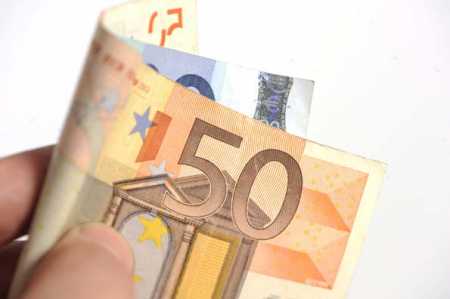Tue, 08 Apr, 2014 02:19:10 AM FTimes-Xinhua report by Richard Kvasnovsky, April 8
Slovenia introduced the euro in 2007. Former Prime Minister Janez Jansa said Slovenia decided to enter the eurozone at the right time. The timing was right in terms of the favorable economic climate, as well as the positive atmosphere among the EU15 countries vis-a-vis the euro in years 2005 and 2006. "The introduction of euro is not only an economic but also a political decision," Jansa said at the time. Slovakia fully adopted the common European currency five years ago, on Jan. 1, 2009. According to the Minister of Finance Peter Kazimir, Slovakia had luck with entering the eurozone. "I am convinced that, especially in times of crisis in 2009 euro gave us a shield, for which we should be grateful, because the consequences could be much worse," said Kazimir. Currently, the common currency is still supported in Slovak society. A survey carried out by Focus exclusively for the daily Hospodarske noviny shows that 59 percent of the respondents in the survey viewed the euro positively. On the other hand, as many as 37 percent of Slovaks said they would like to go back to the old currency -- the koruna. According to Focus agency director Ivan Dianiska, the main reason for this is perceived increases in the cost of goods and services. "The euro still isn't easily read by people. Some still think that it allows traders to increase prices in a gradual, sneaky manner without people noticing," he added. Prices in Slovakia recorded an increase of 12 percent since 2009. Slovak retailers concur that the euro isn't to blame for price hikes witnessed in the past few years. "The euro certainly hasn't contributed to the price increases," said retail chain COOP Jednota Slovensko managerial board vice-chair Martin Katriak. Nevertheless, experts claim that the common currency did have a certain impact on prices, albeit in the form of their stability. "This is seen in the inflation development for the past five years," said Slovak Academy of Sciences economic analyst Vladimir Balaz. While 2009 and 2010 saw prices rise only very slowly -- with the adoption of the new currency having only negligible impact on the hike -- marked price increases came only later. Ivan Stefanec, former government proxy for the euro's introduction, sees economic stability as important provision of the common currency. "The savings when considering currency disparities, fees for the replacement of the currency and from its hedging, as well as lower transaction expenditures are advantages that we currently take for granted," he emphasized. The last few years has seen the eurozone membership enlarging in the Baltic area. The accession of Estonia on Jan. 1, 2011 and Latvia three years later were perceived as an important signal that after financial problems of Greece, Ireland, Portugal and Spain, the euro was still attractive for new countries. Both Baltic states were praised for their efforts for demanding reform in adopting the common currency. The common European currency now covers 18 countries and 333 million people.
More News
|
|
Finland Times
| Tuesday, 18 November, 2025 |


